Hope Tech Enduro - Pro 4 29" Rear Wheel - Red

Hope Tech Enduro Pro 4 29er wheels are made to take a beating, staying true in even the most challenging terrain. From enduro race tracks, to downhill runs and all day trail adventures, Hope Tech Enduro wheels can be depended on to keep you rolling.
Hope hubs have a well-deserved reputation for reliability and top performance, for a reasonable price. The new Pro 4 hub has a 4-pawl ratchet system with 44 tooth engagement, for fast power transfer. The new Pro 4 hubs are built in-house at Hope from a forged 2014 T6 aluminium billet and feature larger spoke flanges for stiffer wheels and stainless steel bearings for smooth and dependable rolling.
Hope Enduro rims are robust and feature a triple cavity design. The 6061 T6 aluminium rim is eyeleted around the spoke holes and welded to give it extra strength. Sapim Race/Sprint stainless steel, double butted spokes in black are paired with silver brass spokes to finish off the wheels, making a super strong and dependable wheelset.
This 29” wheel comes in 32 hole configuration with a Red hub and a number of different freehub options, including SRAM’s XD Driver, Hope’s new bespoke freehub and the standard Shimano freehub, in both steel and aluminium. There are also a number of different widths available, including the new 148mm Boost standard.
Key Features:
- Built with Pro 4 hubs in either straight pull or standard spokes
- Wheels machine built and hand finished in Barnoldswick
- Triple cavity construction offers excellent strength, yet keeps the weight low
- Available in 29"
- Tubeless compatible (requires tape and valves)
- 135mm, 148mm and 150mm complete rear wheel options available
- Standard Shimano or SRAM XD freehub body options available for rear wheel
- "Enduro rim designed and tested by Hope"
Hope Tech Enduro – Pro 4 Tech Specs
- Rim: 23mm internal & 28mm external width
- Welded and eyeleted 6061 T6 aluminium rim
- Triple cavity construction for added strength
- Black Sapim Race/Sprint stainless steel double butted spokes
- Silver Brass nipples
- Standard hub wheel builds available in Black, Silver, Blue, Red, Purple and Orange
- Straight pull hub wheel builds also available in above colour options (Only available as an option with our rims)
- Front wheels supplied with QR and 15mm conversions included (9 and 20mm conversions available separately)
- Rear wheels supplied with 135mm QR and 142x12 conversions, 148mm & 150mm (135x10//135x12//135x10 bolt in conversions are available separately)
- 32 hole Pro 4 hubs
- 4 Pawl ratchet mechanism
- Stainless Steel, sealed cartridge bearings
- Rim ERD: 29" 600
- Weights for rim only 29"-540g
- Compete standard wheel weights: 29" F 962g R 1093g
Occasionally, without notice, manufacturers change product design and/or specifications.
MTB Wheel Sizing
When buying a new set of wheels, it is essential that you choose ones that are compatible with your mountain bike. This means that you will need wheels that have the same diameter rim, the same hub width and the same axle diameter as the existing wheels on your bike.
Rim sizes
Rim Diameter
There are four mountain bike rim diameters that relate to the four main wheel sizes.
If you are upgrading your wheels, then in most cases you will have to use wheels with the same diameter as the originals. The exception to this is bikes that are specifically designed to work with both 29” and 27.5” plus sized wheels.
|
29” |
The largest MTB wheel size, found on 29ers |
|
27.5” |
Also known as 650b, this is the most common MTB wheel size 27.5” + (plus) wheels have the same diameter as regular 27.5” wheels but have wider rims. |
|
26” |
The traditional MTB wheel size, now only found on dirt jump bikes, some small size adult bikes and junior bikes. |
|
24” |
Found on some dirt jump bikes and Junior MTBs. |
Rim Width
Rim width can be measured from the inside or the outside of the rim, but it is the internal rim width measurement that matters most. Wider rims are best suited to wider tyres. Bikes with Boost hub spacing have more room for wide tyres. While all rim widths for a specific rim size will fit your bike wider tyres may not.
Hub Sizes
Axle Diameter
Traditional Quick Release (QR) axles have a 9mm (front) or 10mm (rear) axle diameter. These work with conventional dropouts similar to those found on road bikes. Many mountain bikes now use thru axles (TA) for improved handling.
Front Axle Diameter – 15mm thru axles, are the most common on trail, enduro and cross-country MTBs. 20mm thru axles are mostly found on downhill bikes. Many forks have some type of quick release thru axle so may be referred to as 15QR or 20QR. Traditional 9mm QR axles are found on affordable hardtails and MTBs with rigid forks.
Rear Axle Diameter – 12mm is the most common thru axle size. 10mm QR axles are found on more affordable full sus and hardtail MTBs. 10mm thru axles and 10mm bolt on axles are found on some older bikes, these are compatible with conventional dropouts.
Hub Width
Front Hubs – There are two front MTB front hub widths. The traditional width is 100mm. Many high-end mountain bikes now use the wider Boost axle standard which is 110mm. Downhill hubs with 20mm axles have traditionally used the 110mm hub spacing. New Boost downhill hubs use the same hub width and axle diameter but the hub flanges are wider so the brake rotor sits in a different position.
Rear Hubs – Rear axles are a little more complicated. The traditional MTB rear axle width is 135mm but 142mm is more common with thru axles. The Boost standard for rear hubs is wider at 148mm. Downhill bikes tend to have even wider hubs. 150mm is a common DH hub width but there is also the new 157mm Super Boost standard that is found on some Downhill bikes.
Front Wheel
|
Hub Width |
Axle diameter |
Type |
Common Use |
|
100mm |
9mm |
Quick Release |
Traditional, found on entry level hardtail MTBs |
|
100mm |
15mm |
15mm thru axle |
For older trail MTBs |
|
110mm |
15mm |
15mm Boost thru axle |
For Boost compatible single-crown forks |
|
110mm |
20mm |
20mm thru axle |
For downhill forks |
|
110mm |
20mm |
20mm Boost thru axle |
For Boost compatible downhill forks |
Rear Wheel
|
Hub Width |
Axle diameter |
Type |
Common Use |
|
135mm |
10mm |
Quick Release or Bolt On |
Entry level MTBs and Dirt Jump bikes |
|
142mm |
12mm |
12mm thru axle |
Traditional MTBs with thru axles |
|
148mm |
12mm |
12mm Boost thru axle |
Boost compatible XC, trail and enduro MTBs |
|
150mm |
12mm |
12mm thru axle |
Downhill bikes |
|
157mm |
12mm |
12mm Super Boost thru axle |
Super Boost compatible downhill bikes |
Note: some wheels are supplied with adaptors that makes them compatible with both quick release and thru axles.
Brake Compatibility
Choosing wheels that are compatible with the brakes on your bike is essential.
Rim Brakes
If you have rim brakes on your bike than you will need a non-disc wheel that has a braking surface on the rim. Non-disc wheels are not compatible with disc brakes.
Disc Brakes
You will need disc compatible wheels for a mountain bike with disc brakes. There are two ways of mounting discs to your wheel. If you want to use your existing disc rotors, then look for a wheel that has the same mounting system.
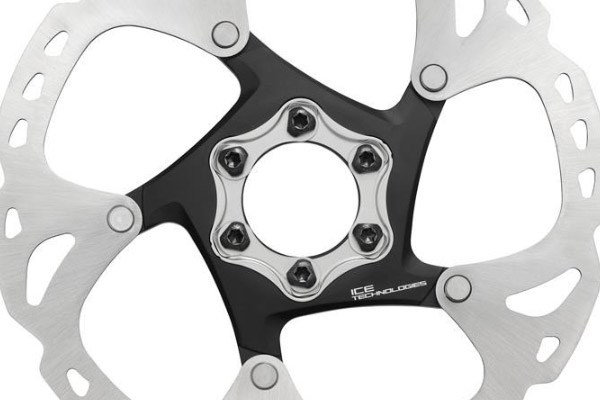
6 Bolt rotors – The disc rotor is attached to the hub with six bolts. This is the traditional way of attaching a rotor to your wheel and is still the most common.
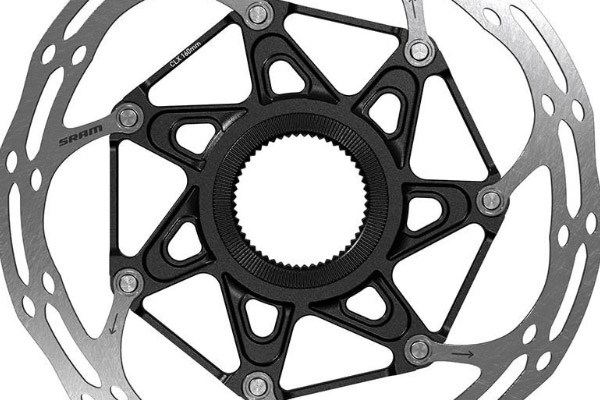
CenterLock – Developed by Shimano this system is easy to use but centre lock hubs are less common than six bolt.
Adaptors are available, so you can convert a 6 bolt wheel to CenterLock and visa versa.
Freehub Compatibility
The freehub is the part of the rear hub that the cassette is attached to. There are four main types of freehub for mountain bike wheels, each is designed for a specific type of rear cassette.
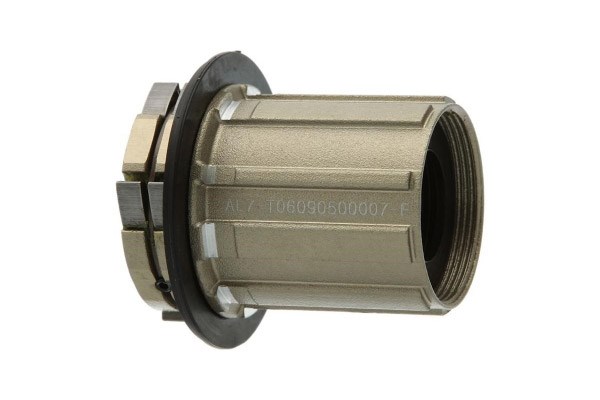
Shimano Hyperglide splined
This is the most common type of freehub body. Most 7, 8, 9 and 10 speed cassettes, as well as some 11 & 12 speed cassettes are designed to work with the Shimano Hyperglide splined freehub body. This includes SRAM 7, 8, 9 and 10 speed, as well as SRAM NX 11 & 12 speed cassettes.
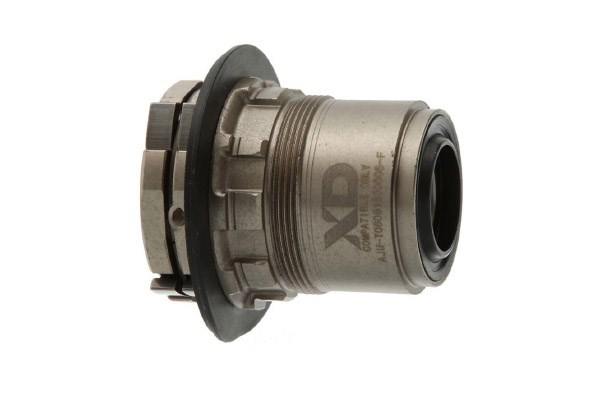
SRAM XD
Most SRAM 11 and 12 speed cassettes are designed to work with a SRAM XD freehub driver.
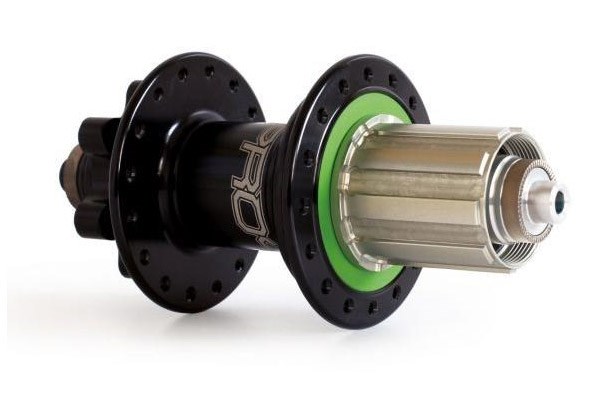
Hope Freehub
Hope’s unique freehub body is designed to work exclusively with Hope cassettes.
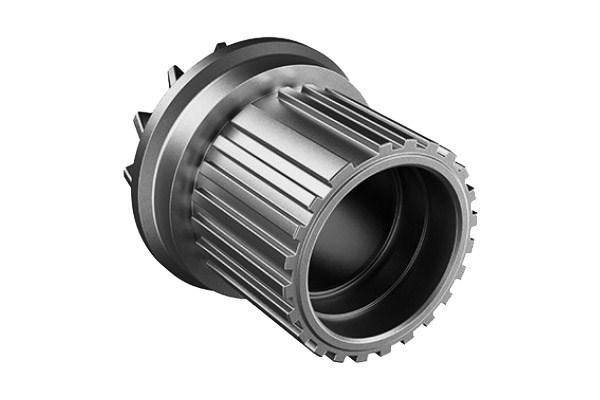
Shimano Micro-Spline
Shimano’s new freehub body is designed to work with Shimano 12 speed systems.
Brand compatibility
While most rims and hubs are laced together in a standard way some brands do things a little differently. Cannondale use their Ai (Asymmetric Integration) system on many of their new full-sus MTBs. This means that the rim sits in a different position to a standard wheel, so you will have to either upgrade to a compatible Ai wheel or get a standard wheel adjusted by a professional wheel builder.
Jargon Buster
Bolt On – an axle that is incorporated into the hub with nuts on the end. Designed to work with traditional 9mm or 10mm dropouts.
Bolt Though Axle – an axle that goes through the hub body and fixes to the fork or frame of you bike.
Butted – where excess material has been removed from low stress areas.
Eyelet - A fitting in the rim that holds the nipple in place.
Freehub – The freehub allows the rider to stop pedalling whilst the bike is still moving forward. The rear cassette is attached to the freehub body.
Hub - The centrepiece of the wheel, from which the spokes branch out to the rim. Rotates around the axle, which is an external component attached to the fork or frame.
Hub flange - The collar of the hub that the spokes attach to.
Lacing - The pattern in which the spokes are threaded when building a wheel. The exact same wheel threaded in a different pattern can produce a completely different ride character.
Nipple – The small component that the spokes screw into at the rim.
Rim - The outermost component in a wheel. The bit the tyre sits on.
Spoke - The rods connecting hub to rim. J-Bend spokes are most common – they are identified by the bend at the hub end, and thread into the nipple at the rim. Straight-pull spokes have no bend and, as they are often proprietary to the wheel they are made for, are less readily available in bike shops.
Tubeless – Technology that allows does away with the inner tube
Tubeless rim tape – Rim tape that makes an air tight seal around the rim of tubeless compatible wheels
Tubeless Sealant – latex based liquid that you put inside tubeless tyres to get a good airtight seal. Tubeless sealant will self-repair small punctures.
True - A straight wheel is called ‘true’. If it gets a wobble, usually caused by the spokes unequally going out of tension, it is out of true.
Valves – The port of the bike that is used to inflate and deflate the tyre. There are two types of valve for bikes. Schrader valves are the same as those on car tyres while Presta valves are narrower bike specific valves designed for high air pressures. Valves are attached to the rim in tubeless set ups or included with the inner tube on traditional wheel setups.
QR – Quick release. Designed to work with traditional 9mm or 10mm dropouts. A quick release skewer fits through the wheel and allows you to quickly change the wheel.
TA – Through axle. See Bolt Through Axle above.
Wheelset – both the front and the rear wheels are included in the wheelset
Customer reviews and Q&A's are disabled because you declined functional cookies.
To enable reviews and Q&A's click the 'Cookie Settings' button below and enable functional cookies.
No longer available
Sorry you missed the Hope Tech Enduro - Pro 4 29" Rear Wheel - Red.
This product is no longer available.